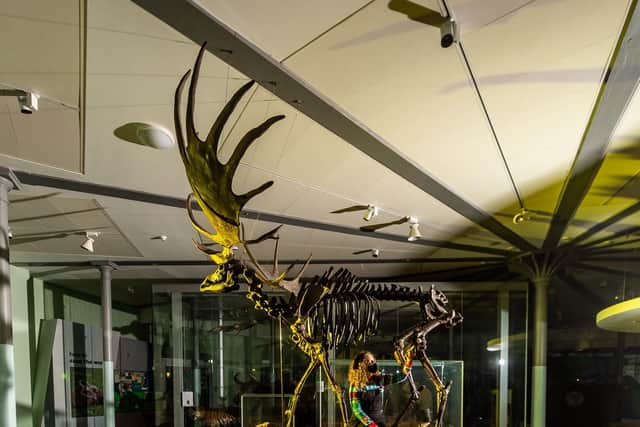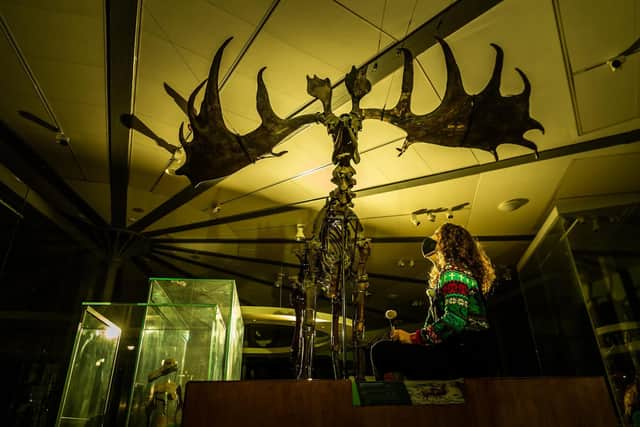Giant deer at Leeds City Museum gets mammoth clean in time for Christmas
and live on Freeview channel 276
Experts have been giving Leeds City Museum’s 10,000 year-old giant deer a pre-Christmas clean as visitors get the chance to step back in time and learn about the incredible creatures of the Ice Age.
One of the most recognisable exhibits in the museum’s spectacular Life on Earth Gallery, the towering ruminant roamed the Earth during the Pleistocene era more than 7,000 years ago and was among the largest deer to have ever lived.
Advertisement
Hide AdAdvertisement
Hide Ad

With the scientific name Megaloceros giganteus, meaning “giant horn”, the species also had the largest antlers of any known deer, measuring around 12ft from tip to tip.
During the 19th century, remains of giant deer were abundant in Ireland, with a thriving trade developing through sales to museums and for use as impressive ornaments in stately homes.
Discovered at Lough Gur near Limerick, Leeds City Museum’s skeleton was originally purchased in 1847 by the Leeds Philosophical and Literary Society from Glennon's in Dublin for the sum of £38.
This week Clare Brown and Rebecca Machin, Leeds Museums and Galleries’ curators of natural sciences, took on the mammoth task of clearing accumulated dust and dirt from its colossal antlers.
Advertisement
Hide AdAdvertisement
Hide Ad

